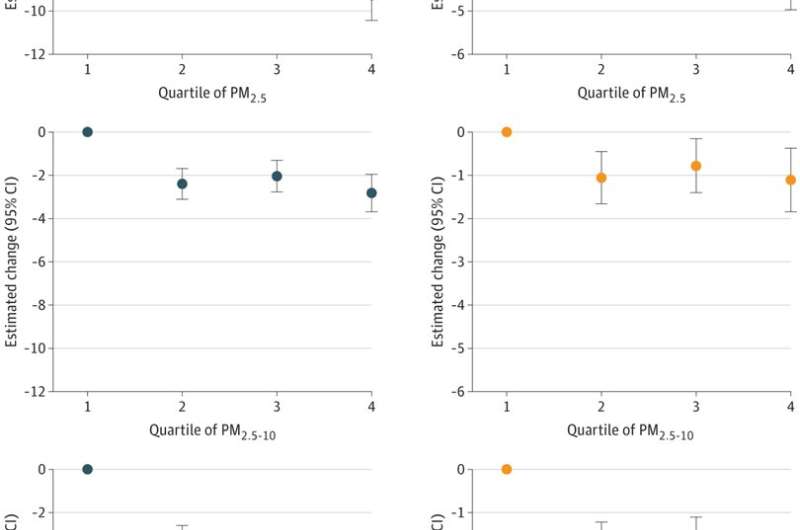February 18, 2022 report
Air pollution found to reduce sperm motility

A small team of researchers affiliated with several institutions in and around Shanghai, China, has found evidence that men who live in heavily polluted areas may experience poor sperm motility. In their paper published in JAMA Network Open, the group describes studying the medical records of thousands of men living in China.
Prior research has shown that sperm counts for men living in North America, Australia and Europe have been declining since the 1970s. Scientists do not know why this is happening, but theorize it is likely tied to air pollution. Several studies have been conducted in recent years attempting to better understand the connection between sperm health and air pollution involving particulate matter. Unfortunately, such studies have delivered mixed results. In this new effort, the researchers in China sought to find connections by studying the health records of 33,876 male patients at fertility clinics in 130 cities in China.
The work involved first separating the patients into four groups based on the degree of air pollution in the areas where the men lived. They then studied sperm examination results conducted by doctors at the fertility clinics. They focused on sperm count, degree of concentration and motility. Motility describes the ability of sperm, on average, to swim forward, and is considered a measure of sperm health.
The researchers were not able to find any connection between the number of sperm produced by the patients, nor sperm concentrations, and air pollution levels. They did see patterns involving motility, however. They found that patients living in areas of high concentrations of the smallest types of particulate matter had the lowest sperm motility. The researchers were able to narrow their results more specifically—they found that patients exposed to particulate matter smaller than 2.5 micrometers had on average a 3.6% decrease in motility when compared to the average man in China. In men exposed to somewhat larger particulates, such as those up to 10 micrometers in diameter, the average drop in motility was 2.44%. The researchers also found that the impact of air pollution on sperm health was most pronounced in those men who were in areas of heavy pollution during the initial stages of sperm production.
More information: Yan Zhao et al, Association of Exposure to Particulate Matter Air Pollution With Semen Quality Among Men in China, JAMA Network Open (2022). DOI: 10.1001/jamanetworkopen.2021.48684
© 2022 Science X Network




















